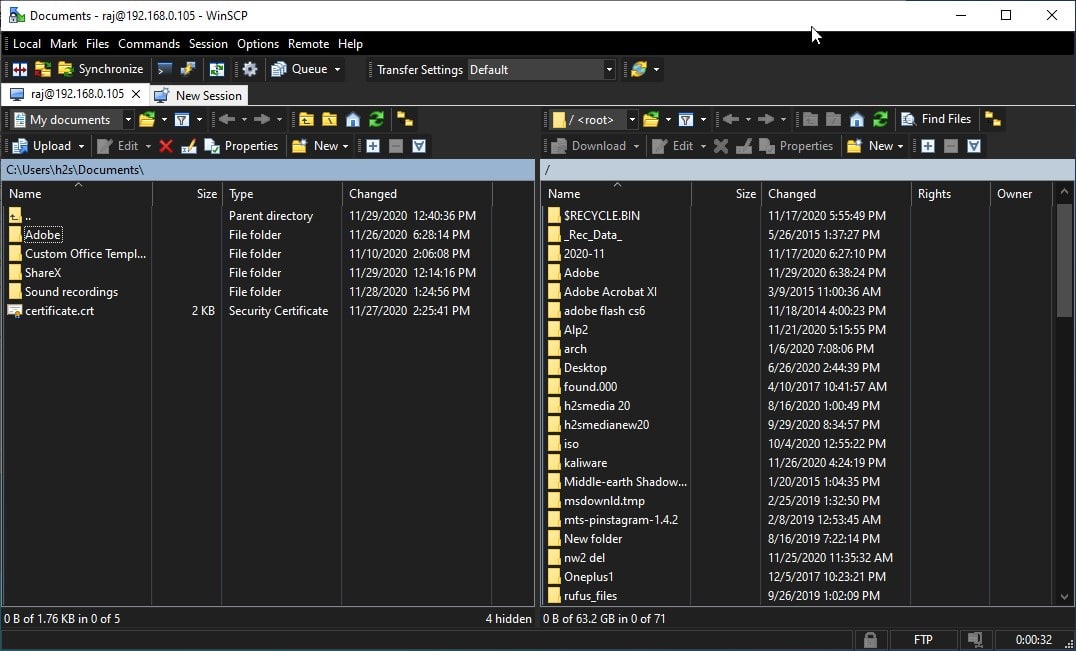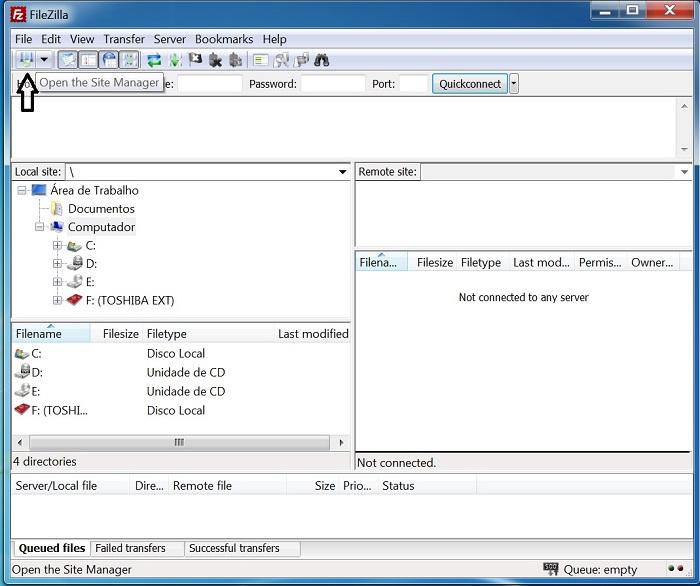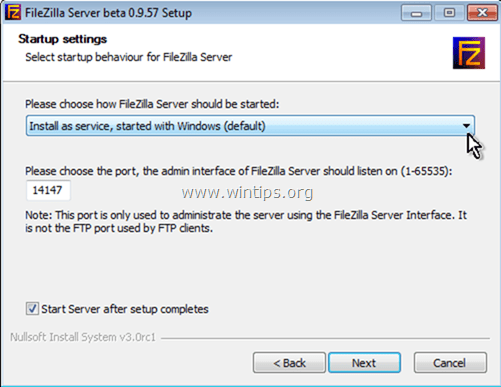

- #Filezilla ftp client windows install#
- #Filezilla ftp client windows full#
- #Filezilla ftp client windows software#
- #Filezilla ftp client windows password#
- #Filezilla ftp client windows iso#
We should also specify the firewall profile. In short, we need to allow the whole incoming traffic to any network port our application wants to open. Our command will be: netsh advfirewall firewall add rule name="FileZilla" program="C:\Program Files (x86)\FileZilla Server\FileZilla Server.exe" action=allow dir=in enable=yes profile=any We can control the firewall settings through it.

We want to allow the FileZilla Server executable through the firewall. We can either enable the remote server administration protocol (WinRM) or to use command line. However, we cannot so easily change the rules in this version.
#Filezilla ftp client windows full#
This is same firewall as in the full server version. The Windows Server 2008 Core had the Windows Firewall turned on.

If the FileZilla server is not accessible from the network When we’re inside the FTP console we can configure the server. After that, we will be ready to connect to the server from the remote network location. All Windows computers, starting from Windows Server, will use the IPv6 over the IPv4 as the preferred protocol for an internal network communication. This is a loopback address in the IPv6 protocol. Don’t be confused if the IP address is ::1. We should run the admin console from the server. Our next step will be configuration of the FileZilla server. When the FTP service is running, it should be bound to the port 21 TCP. You will see all running network services on the machine. You can check if the FileZilla server is running with the netstat command. The default path is C:\Program Files (x86)\FileZilla Server. Don’t worry, you can manually run it at any time. Of course, you can’t run automatically the administration console on the Core server version.
#Filezilla ftp client windows install#
I advise you to install the administration console on the local server.

#Filezilla ftp client windows password#
Moreover, no password after the installation. You should keep in mind that you cannot access from a remote location without the FileZilla server administrator password. We will install the software, register a service and service will start automatically. When installation process prompt for the startup parameters, you need to choose them in the same way as when installing in the full GUI environment. You can check my previous post for additional details about the installation process. I run the installation package from the CD (the E: drive in my case) and… voila! We can install the FTP server as usual.
#Filezilla ftp client windows iso#
Therefore, I made an ISO image with an installation of the FileZilla Server. I opted for the first method in this demonstration.
#Filezilla ftp client windows software#
In the Core server we can transfer software either over the CD/DVD disk or using command line tools. You should the latest version of the FileZilla Server. Although I used the Windows Server 2008 R2 SP1 Standard Core in this demonstration, you can also use a Windows Server 2012 R2 Core or Windows 2016 Core. I would recommend you to install integration services for the virtual environment. I installed the Windows Server 2008 R2 SP1 Core as the VM in the Oracle VirtualBox. Therefore, we can install these applications in the same way you would install them on the full Windows Server. The good news is that you can run some graphical installations inside this limited environment. It’s primary intended to be administered remotely. The Windows Server Core has a very limited graphical shell with the command prompt. In addition, there are fewer targets that can be exploited and attacked. The Windows Server Core has less exposed services. We shouldn’t overlook the security aspect of such solution. In addition, today, when most of the servers are virtualized, we can have higher density of the VMs per a virtualization host. The benefit of such solution is that we will need less resources on the server side. Now we have the solution – the FileZilla FTP server running on the Windows Server Core. Therefore, we do not need the GUI on the server side. The whole process of graphic representation of available data is carried out on the client side. In addition, the entire process of data exchange via FTP protocol does not require any server-side visualization. However, when we need a larger amount of the traffic or to server more users, the server side solution is only reasonable choice. The desktop side solution is useful for a small installations. We can use it either as a desktop side solution or as a full server side solution. FileZilla FTP server is a very popular open-source solution.


 0 kommentar(er)
0 kommentar(er)
